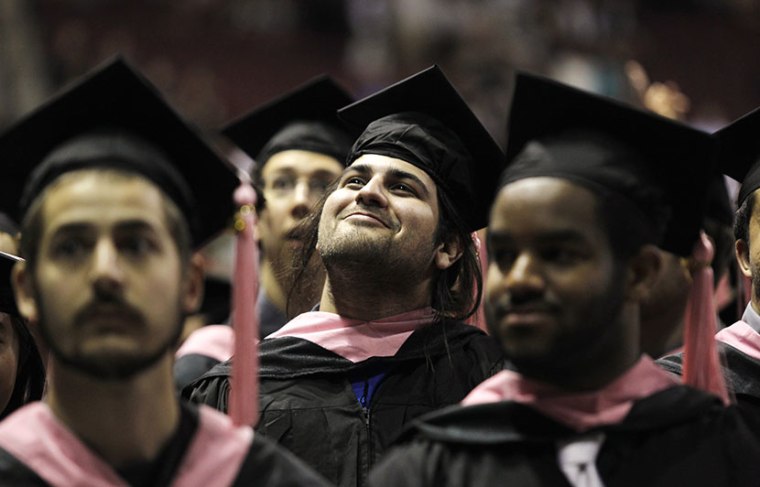Borrowing costs for lower-income students shot up on Monday, jumping from 3.4% to 6.8% on subsidized Stafford loans from the federal government. For the average borrower, that means an additional $761 for every loan they take out through the program, according to Mark Kantrowitz, a financial aid expert and publisher of Edvisors Network.
Neither party is thrilled about the outcome. But in contrast to last year's student loan fight, when both presidential candidates took to the bully pulpit on the issue, there seems to be little sense of urgency coming from Congress or the White House, despite the absence of any clear resolution.
Here's why: First, the rate hikes only affect new loans that are taken out, not existing ones. Most students don't start taking out loans until August or September for the coming school year, and only about 26% of all federal student loans are taken out through the subsidized Stafford program, which requires proof of financial need. What's more, Congress could pass a retroactive fix to lower the rates for the loans that are taken out at the 6.8% rate, according to Senate Democratic aides.
So while the optics of doubled rates aren't great, Congress still has some time to come up with a solution before they actually hit students' pocketbooks. And that took the political pressure off legislators who failed to come to a deal last week and simply packed their bags for the July 4 recess.
Some liberal advocates are also convinced that the rate hike was better than a bad long-term deal that they believe would have increased borrowing costs for students even more down the road. And they remain hopeful that Congress will revisit the issue when they return from recess on July 10.
"There has been a bloc of folks saying any reduction of rate has to be contingent on raising the rate further down the road. It hasn't gotten worse by adopting [that]," said Mike Russo, director of federal programs at U.S. PIRG, a consumer advocacy group. "It is the best thing for students given the timeline...and there is time to fix it."
Senate Democrats do have a new plan of action, rallying behind a short-term fix that would extend the lower 3.4% rate for subsidized Stafford loans for one year. That's what Congress did last year when the deadline first came up, prompted by 2007 legislation that lowered the rates for just five years.
The new Senate plan has the support of Sen. Majority Leader Harry Reid of Nevada and Iowa's Sen. Tom Harkin, chair of the Senate's health and education committee. The $4.6 billion fix would be paid for "by closing a loophole that currently allows those who inherit certain IRAs and 401(k)s to avoid paying the taxes on those accounts for many years," according to a statement from Harkin's office. It would also have a retroactive fix for loans made in the month of July at the higher 6.8% rate.
The problem is, there's no certainty that such a bill can pass the Senate, much less the GOP-controlled House. A similar two-year fix that offset the 3.4% rate with closing oil and gas tax loopholes failed to overcome a Republican filibuster in the Senate. And House Republicans, who passed a long-term fix last month, have ruled out any short-term solution.
House Education Committee Chair John Kline "has been very clear on his disapproval of another temporary fix to the student loan interest rate problem," said his spokeswoman, Alex Sollberger. "This would be a disservice to students and families who deserve the certainty that can only come with a long-term solution."
One potential bipartisan compromise was put forward by Sens. Angus King (I-Maine), Joe Manchin (D-Wv.), Richard Burr (R-NC), and Tom Coburn (R-Okla.). But Senate Democrats, including Speaker Reid, blasted the proposal as a non-starter for failing to include a cap that would prevent interest rates from skyrocketing in the future and using savings from student loans to pay down the deficit.
So there's still no clear endgame in Congress, given Republican and Democrats' competing demands. And President Obama isn't rallying big audiences around the issue as he did last year, when he urged students to lobby lawmakers "Don't double my rate!" That's left some observers feeling highly pessimistic that Congress will ultimately do anything at all to lower these borrowing costs for students.
"I don't think Congress is going to act," said Kantrowitz. "There are nine different proposals out there, and I don't think there is going to be an agreement."
